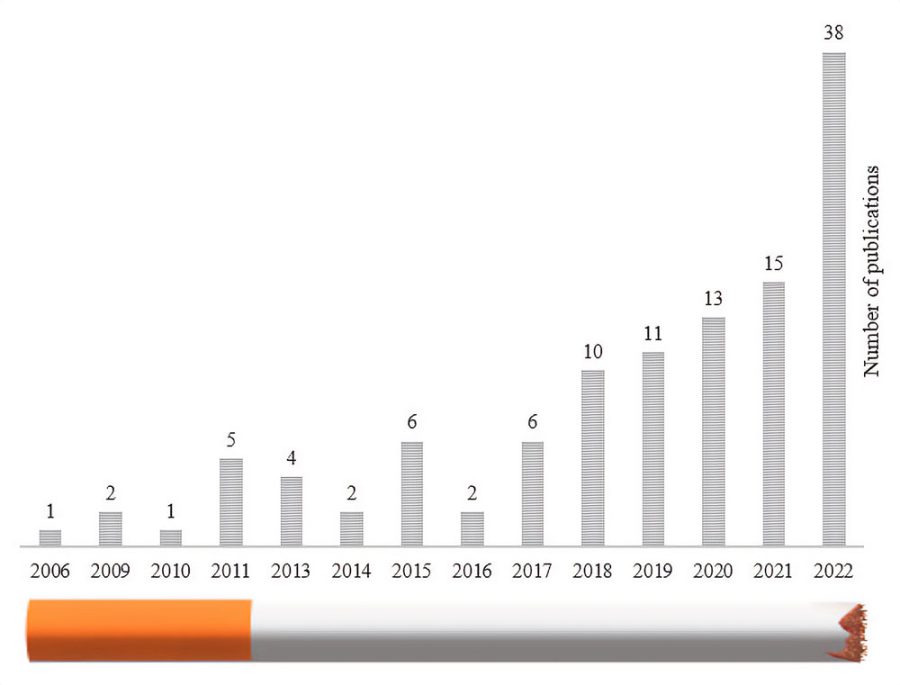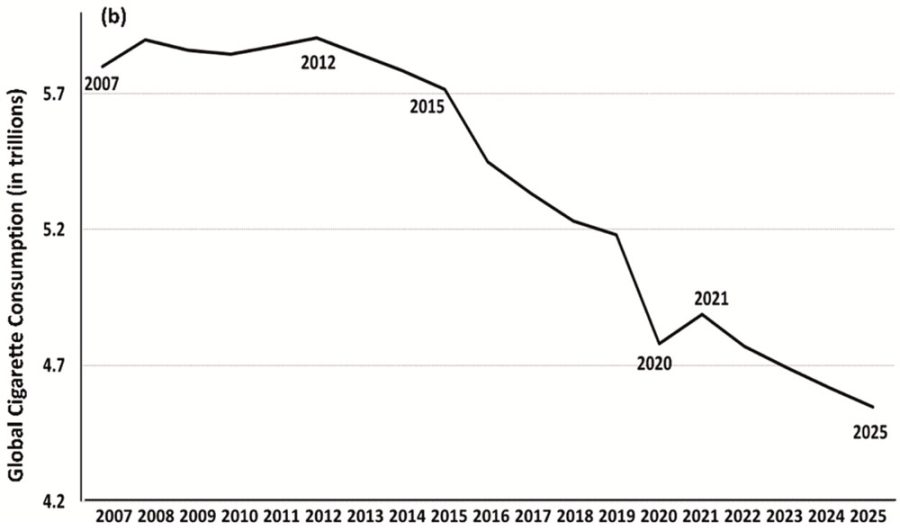In Graphic Detail: Cigarette Butt Research Is Lighting Up
As the world’s beaches and oceans have become one giant ashtray, research has accelerated on what many are calling a global crisis.
Article body copy
Back in 1964, when only around half of manufactured cigarettes had filters, a Wisconsin inventor patented a filter made from dairy—specifically from hard cheeses like Parmesan, Romano, Swiss, or aged cheddar. He advised mixing charcoal with the cheese to keep the filter from becoming rancid. The goal was to find another market for Wisconsin cheesemakers, not to create a filter devoid of microplastics. Too bad.
Today, spent filters—cigarette butts stuffed with microplastics—are some of the most abundant litter on the beach, which is just one stop on their toxic marine journey that often begins in storm drains.
Researchers have published a number of studies in 2023 on the problem of cigarette butt littering, from a review of studies on environmental contamination to a global analysis of the crisis. In fact, the number of studies is on the rise, with researchers publishing twice as many in 2022 compared with 2021.

In 2022, researchers published more than double the number of studies about the environmental impacts of cigarette butt littering than they did in 2021. Graph courtesy of da Silva et al.

Global cigarette consumption has declined by about one trillion cigarettes since 2012. Graph courtesy of Vanapalli et al.
Oddly, as smoking rates have dropped overall, environmental research has risen.
And yet the number of cigarette butts found in the environment tripled between 2012 and 2019—probably because we’re finally looking for them.
One new study focuses on predictors for littering and the ecotoxicity of cigarette filters, which are around two to three centimeters long and consist of over 12,000 densely packed, Y-shaped fibers made from cellulose acetate.
Another study found that smokers with access to many conveniently placed ashtrays keep streets cleaner. Not surprising. Who among us is not lazy? Smokers who flicked their butts were, on average, 9.45 meters away from the nearest ashtray; once beyond five meters, their littering increased. Smokers also prefer littering in groups—again, unsurprising since we’re a social species.
Despite all the research, the world appears no closer to a butt-free environment. Are cheese filters the answer? Probably not. But neither, apparently, are more than 100 studies.

